In 1931, when Germany was on the throes of being taken over by Nazi Germany and imminent dictatorship, a Republican government emerged in Spain, overthrowing the stranglehold of the monarchy and the Catholic Church. King Alfonso XIII left Spain on April 14, 1931 paving the way for the Second Spanish Republic.
This is a beautiful 50 pesetas banknote that was issed on May 17, 1927 with a portrait of King Alfonso XIII.
The reverse is a famous oil painting by Spanish painter José Moreno Carbonero (March 28, 1860 - April 15, 1942)depicting the second foundation of Buenos Aires by Juan de Garay (City Council of the City of Buenos Aires). Carbonero taught Salvador Dali and Juan Gris.
Republican candidates won the freely contested elections. What ensued was a liberal backlash against the elected government and the Catholic Church which led to an open revolt by General Franco followed by a bloody three year Civil War. Besides Spaniards, many foreigners such as George Orwell joined the ideological conflict.
The Spanish Civil War began on July 17, 1936 when the Spanish Army in Morocco under the leadership of General Francisco Franco revolted against Manuel Azaña’s democratically elected Republican government (elected on February 16, 1936). The Republicans or Loyalists constituted the working class peasants, and trade unions. Socialists, Communists and Anarchists were also aligned with the Republicans. The rebels were the Nationalists supported by renegade factions within the Spanish army, the wealthy land owners, the middle class and the Catholic Church. During the bloody conflict that resulted in over 500,000 casualties, the Republicans received support from the Soviet Union and the Western democracies. The Nationalists were armed and supported by the Fascists – Nazi Germany’s Adolf Hitler and Italy’s Benito Mussolini.
Prior to the civil war, the Republican flag of Spain had the red, yellow and purple tri-color.
Franco introduced a new flag from 1936 - 1938 for the Spanish areas under his control, thereby replacing the Republican flag.
Spanish artists such as Pablo Picasso and Jean Miro were critical of Franco and the devastation caused from the Civil War. I saw Joan Miro’s Aidez Espagne (Help Spain) painting from 1937 when I visited the Fundació Joan Miró in Barcelona in March 2012.
The words in Spanish translates as follows:
"In the current conflict on the Fascist side I see massive forces; on the other side are the people whose immense and creative resourcefulness will give Spain a vitality that will astonish the world."
In communities where the money supply was suppressed, wages were paid in coupons depending on the size of the families, and not based on the actual work performed. Some locally produced foods were distributed freely. The coupons could also be redeemed at the local communal depots for essentials. Surplus items were also exchanged with other Anarchist towns and villages.
 |
| Time - King Alfonso XIII, July 23, 1928 |
The reverse is a famous oil painting by Spanish painter José Moreno Carbonero (March 28, 1860 - April 15, 1942)depicting the second foundation of Buenos Aires by Juan de Garay (City Council of the City of Buenos Aires). Carbonero taught Salvador Dali and Juan Gris.
Republican candidates won the freely contested elections. What ensued was a liberal backlash against the elected government and the Catholic Church which led to an open revolt by General Franco followed by a bloody three year Civil War. Besides Spaniards, many foreigners such as George Orwell joined the ideological conflict.
The Spanish Civil War began on July 17, 1936 when the Spanish Army in Morocco under the leadership of General Francisco Franco revolted against Manuel Azaña’s democratically elected Republican government (elected on February 16, 1936). The Republicans or Loyalists constituted the working class peasants, and trade unions. Socialists, Communists and Anarchists were also aligned with the Republicans. The rebels were the Nationalists supported by renegade factions within the Spanish army, the wealthy land owners, the middle class and the Catholic Church. During the bloody conflict that resulted in over 500,000 casualties, the Republicans received support from the Soviet Union and the Western democracies. The Nationalists were armed and supported by the Fascists – Nazi Germany’s Adolf Hitler and Italy’s Benito Mussolini.
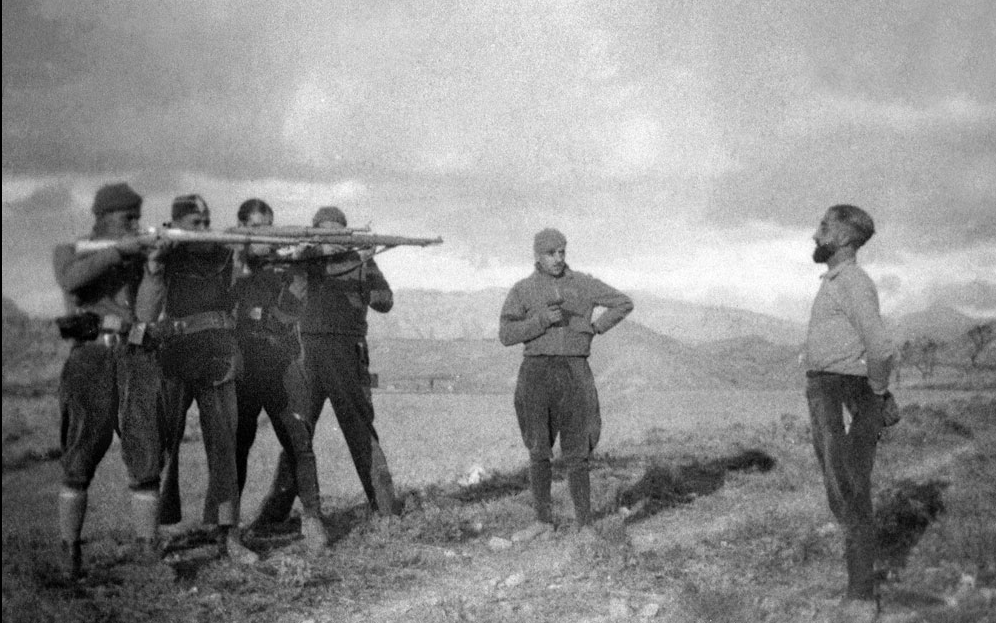 |
| Spanish Civil War execution |
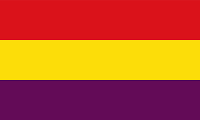 |
| Republican Flag - Second Republic |
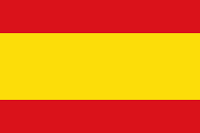 |
| Franco's Flag 1936-1938 |
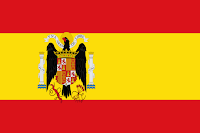 |
| Franco's Flag1938-1945 |
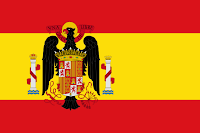 |
| Franco's Reign 1945 - 1977 |
The words in Spanish translates as follows:
"In the current conflict on the Fascist side I see massive forces; on the other side are the people whose immense and creative resourcefulness will give Spain a vitality that will astonish the world."
In communities where the money supply was suppressed, wages were paid in coupons depending on the size of the families, and not based on the actual work performed. Some locally produced foods were distributed freely. The coupons could also be redeemed at the local communal depots for essentials. Surplus items were also exchanged with other Anarchist towns and villages.
In many communities influenced by the Anarchists, across Spain, money was all together abolished. A local Libertarian paper in Fraga, Aragon ran an article:
“Here in Fraga you can throw banknotes into the street and no one will take any notice. Rockefeller, if you were to come to Fraga with your entire bank account you would not be able to buy a cup of coffee. Money, your God and your servant, has been abolished here, and the people are happy.”
George Orwell, the famous political journalist and novelist (author of 1984 and Animal Farm) joined the Catalonian militia in the fight against Fascism in 1936. In less than a year he had to flee for his life. He wrote a book about the ideological conflict that resulted in the Spanish Civil War.
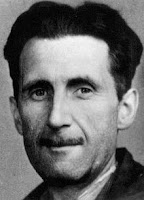 |
| George Orwell |
George Orwell trained in Barcelona at the military headquarters (The Lenin Barracks) of the POUM (Worker's Party of Marxist Unification). He is the tall person in the rear.
General Franco was based in Burgos, north of Madrid, during the Civil War. This is a famous photograph of the rebel leader taken on June 17, 1937 on the steps of the church in Burgos, rebel Spain, where he attended the funeral services for the late General Emilio Mola, commander of the insurgent northern army.
With the Republican currency rendered useless by the Anarchists and the economic upheaval, Franco introduced the countermark on Spanish banknotes -- the countermark with the Censurado Burgos stamp, Arriba Espana, Censura Militar and the Coat of Arms on the Spanish banknotes from Burgos. These banknotes circulated in areas that the Nationalists controlled. The countermark on Spanish banknotes did two things – it totally invalidated the Republican banknotes without the countermarks and brought a sense of stability in regions that he controlled since money could still be used to conduct business.
This rare 50 pesetas banknote that was issued on May 17, 1927 with a portrait of King Alfonso XIII bears the countermark of the Republicans.
The 100 pesetas banknote that was issued on April 25, 1931 with a portrait of Juan Sebastian El Elcano and bears the countermark of the Republicans. The reverse depicts the Disembarkation painting by Elias Salaverria.
The Republicans lost the Civil War for two reasons – first, General Franco was better equipped militarily and Adolf Hitler providing aerial cover with bombing raids on Republican positions which served as a training ground for World War II and second, internal dissent amongst the Republicans. The Communist party in Spain took its orders from The Soviet Union’s Joseph Stalin who ordered the Republicans to defeat General Franco’s Nationalists before transforming Spain from a capitalist state to a communist state. The Anarchists disagreed with this position. General Franco triumphed when the last Republican (Loyalist) forces surrendered to Franco’s Army on April 1, 1939 to end the Spanish Civil War and the rule of the Second Spanish Republic. Spain entered an era of dictatorship under Generalissimo Francisco Franco from the end of the Spanish Civil War in 1939 until his death on November 20, 1975. In Spain, he was called Caudillo Francisco Franco - "Caudillo" in Spanish describes a political-military leader at the head of an authoritarian power (see coins below).
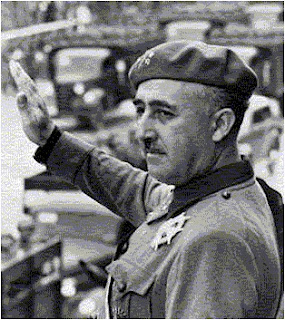 |
| Franco at the end of the Civil War (1939) |
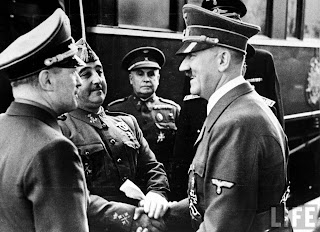 |
| Franco-Hitler in Hendaye - October 23, 1940 |
During his reign he appeared on Spanish coins of all denominations and two of them - a 5 pesetas, 25 pesetas and 50 pesetas coin from 1957 are shown below. All Spanish coins with his portrait say in Spanish: Francisco Franco, Leader of Spain, by the grace of God.


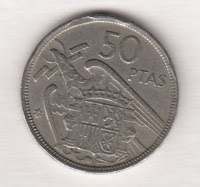
What people in Spain forget today is that Franco, despite the human rights abuses at the time of the Civil War, single handedly preserved the union of Spain as a single entity. In his absence, Spain could quite possibly have disintegrated into several entities - Andalusia, Basque Country, Aragon, Galicia, Asturias, Catalonia and Canary Islands. He kept Adolf Hitler at a distance and ensured that Spain never entered the Second World War. To Franco’s credit, he restored the constitutional monarchy with Juan Carlos II - grandson of King Alfonso XIII - when he named him as the next head of State in 1969, and Spain eventually returned to a democratic form of government.
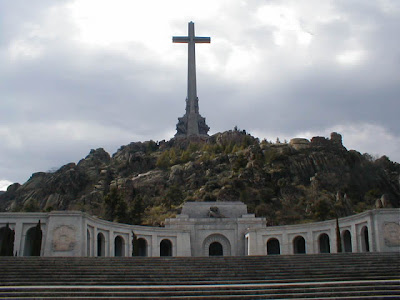 |
| Valle de los Caídos |
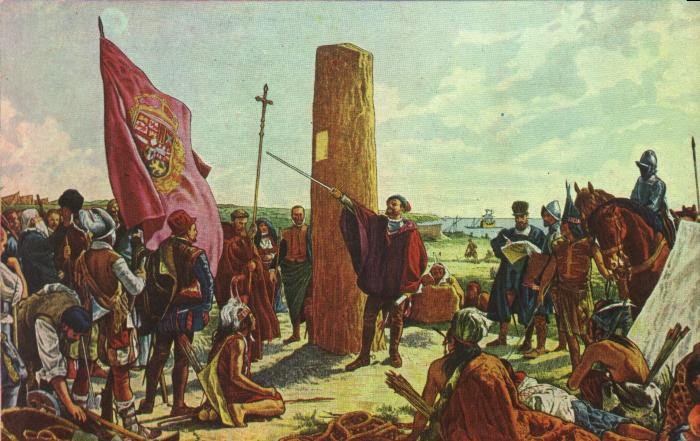

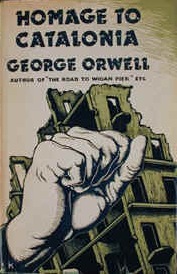
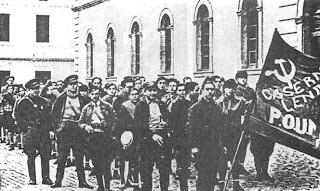

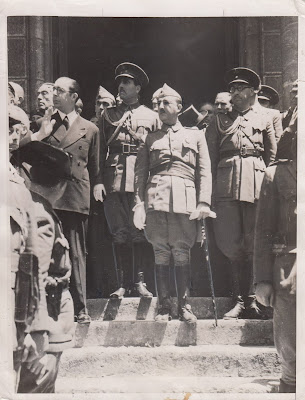

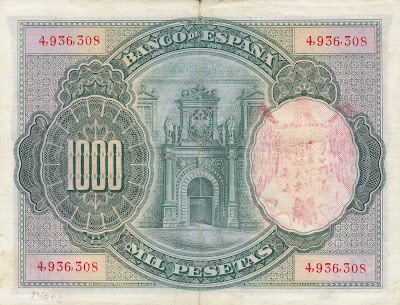
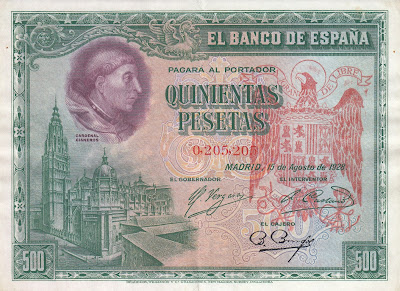
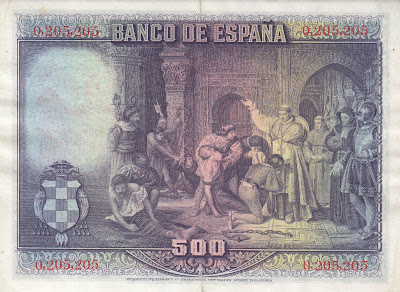
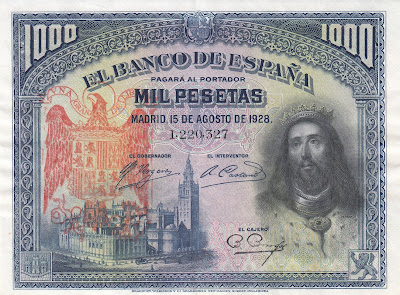
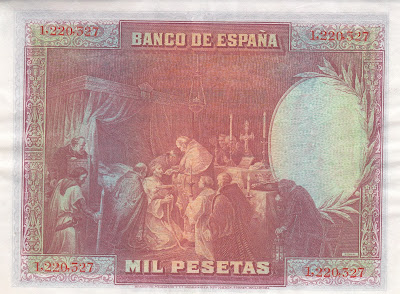
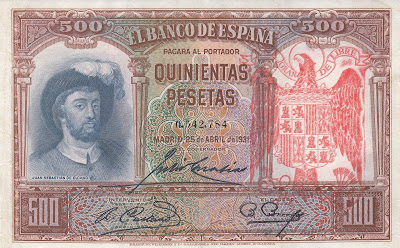

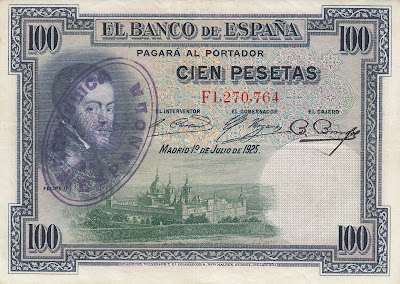


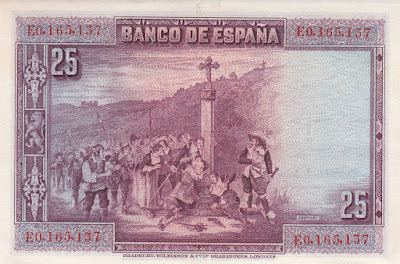

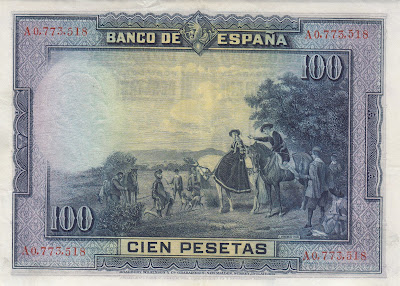
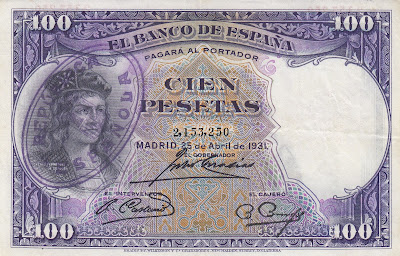
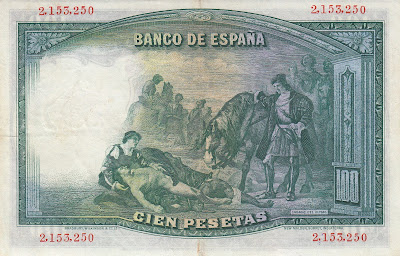
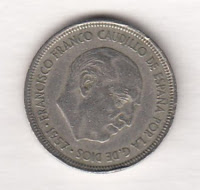
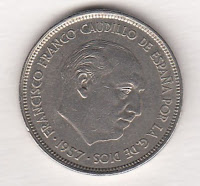
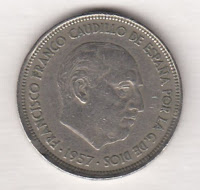
View comments